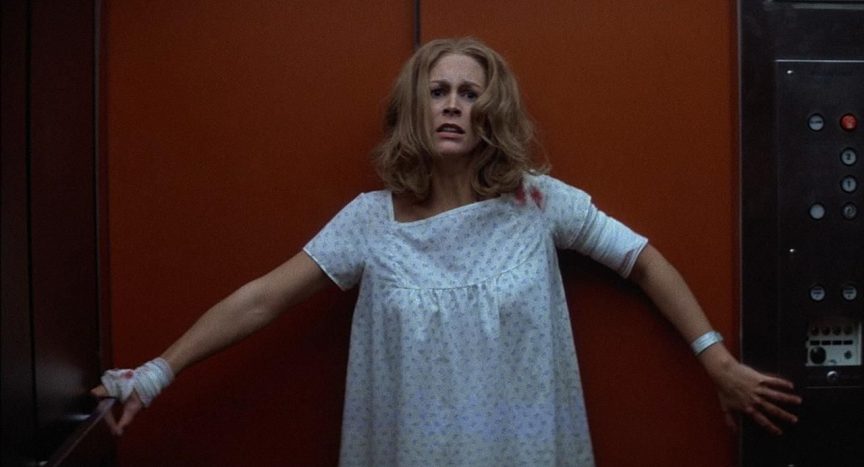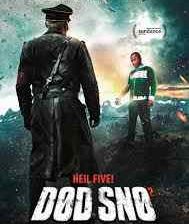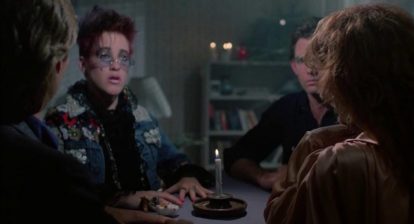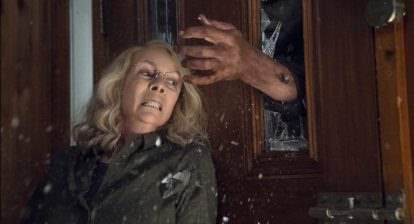A new Halloween film was released in 2018 to great financial and critical success. So, of course, a new trilogy beginning with the last installment is being developed, all stemming directly from John Carpenter’s 1978 Halloween. For only the second time in the franchise’s history, 1981’s sequel had been ignored. With the exception of 1982’s Halloween III: Season of the Witch, each follow-up based its core narrative on the sibling relationship between Michael Myers and Laurie Strode revealed in Halloween II (1981).
Many, many paths have now been forged in the franchise created by John Carpenter. One can take the Jamie Lloyd/Thorn Cult path. Or, the Laurie Strode faked her death leading to a 20-year-anniversary between siblings path. Even still, there is fork in the road where viewers can start at Rob Zombie’s interpretation. Of course, one can always take a break from the saga that is Michael Myers and chill with the ever-lonely Halloween III: Season of the Witch. The latest route leads viewers all the way back to the beginning and then skips ahead forty years to a brother-less Laurie Strode. Like a Choose Your Own Adventure novel, the choices are becoming endless.
Also See: Nat Brehmer’s piece on how the franchise needed a change!
Do I dare go out on this limb to say that without 1981’s Halloween II, the original Halloween would not be as revered as it is today? Well, then let me go one step further. Without Halloween II, we would not have Halloween (2018) and certainly not this new Halloween trilogy. John Carpenter’s 1978 film is a seminal masterpiece and unleashed countless imitations. One remarkable result from these imitations is the barrage of sequels they spawned. The 1980s is a beloved wasteland of horror sequels still generating more to this day. 1978’s Halloween is held up as one of the films that started it all. But, without its own sequel, would it be able to hold its own in horror history?
Like Stu Macher (Matthew Lillard) said in Scream (1996): “these days you’ve got to have a sequel.” The 1980s became just as much about sequels as the originals. With the success of Scream in the 1990s, all of these flicks were given a new resurgence. Looking back from this particular time in history, Halloween would still be considered an iconic piece of film history; however, had Halloween not developed a series of sequels, one could argue that its larger influence would be in question. For not only did John Carpenter’s film help shape the formula of the slasher craze, 1981’s follow up effort continued on its enduring legacy. And, in 1988, Halloween 4: The Return of Michael Myers was released ensuring that the Halloween franchise and Michael Myers would stand up permanently against Freddy Krueger and Jason Voorhees.
Also See this Back to the ’80s retrospective on the series’ fourth and fifth installments!
Horror sequels had already been in existence. Still, like its predecessor, Halloween II held influence over everything to follow. 1981’s feature showed that a follow-up could begin only seconds after the original. Additionally, the same characters could be utilized to continue the story. In comparison, the Friday the 13th franchise certainly picked up on these cues. Friday the 13th: The Final Chapter continues immediately after Part 3. Then, after Final Chapter, the next few installments focus on Tommy Jarvis as he becomes the “Laurie Strode” of that franchise.
One thing that the Halloween series has over many other horror franchises is something developed in the first sequel: the sibling relationship between Michael and Laurie. While being abandoned now, at the time, creating a familial bond was genius. No matter how snubbed over the years, there is little argument to be made that this bond allowed for a believable arc over many films. Instant connections were formed with new characters, all relating back to Michael Myers. Michael was given a genuine and believable motivation to hunt down these characters. Audiences could immediately cheer for these new additions because of their association with other beloved characters.
The series survived because of what Halloween II added to the mythology of Michael Myers. Horror fans were constantly divided over the complicated storylines; however, Halloween II allowed for a solid enough theme to take fans through the 1980s, 1990s, and 2000s based upon Michael’s need to kill his family. Forty years after the original, however, there was only one thing left to do in order to bring back Jamie Lee Curtis as iconic final girl Laurie Strode: abandon the sibling relationship. Otherwise, it would be Halloween: H20 all over again. There are always possibilities to reunite Laurie and Michael, but the basics of that particular sibling story had been told. As a whole, Halloween: Resurrection dropped the ball but it completed the brother-sister duel.
A sibling duel such as that depicted in Halloween: H20 would be hard to duplicate. Love them or hate them, H2O and Resurrection delivered an amazing and triumphant return for Jamie Lee Curtis. To tell a new story and also bring back Curtis in 2018 would require a fresh take on the series. Hence, Blumhouse made the decision to produce the latest installment as a direct sequel to the original film. Not only does that change the dynamic between Laurie and Michael, that choice inserts Halloween (2018) as the new Halloween II of the franchise.
Check out Justin’s review of the 2018 sequel/reboot!
2018’s release certainly set about to cement its place as the new “first sequel” to 1978’s Halloween. Halloween (2018) even recreated scenes from the 1981 film in order to firmly establish itself as the only sequel. For instance, the sequence following Michael from the Elrod kitchen to slashing the throat of the girl next door has been altered. This time, Michael decided to additionally kill off the imitation Mrs. Elrod to let audiences know things have changed. Before, Michael had no motivation to kill off Mrs. Elrod. She simply had a weapon he needed and that was enough for him. This time, the “aimless” Michael Myers decided to take her weapon and her life.
Giving Michael Myers a specific lack of motivation is arguably the right direction to take the Halloween series. No matter how differently things played out, reuniting Michael and Laurie as siblings would, ultimately, only feel repetitive. Still, to disregard what this relationship (stemmed from Halloween II) did for the franchise would be a mistake. The contributions from Halloween II are immeasurable. I like to think that the recreation of scenes in Halloween (2018) was done as a tribute to the original first sequel. This tribute, however, only works if fans remember to respectfully recognize the greatness of Halloween II.
And, Halloween II was full of greatness. Not only did the sequel influence other 80’s slashers, the film helped the Halloween franchise thrive decade after decade. Without Halloween II, it is unlikely that we would even have had Halloween (2018). Laurie Strode stumbling through the halls of Haddonfield Memorial Hospital while Doctor Loomis (Donald Pleasence) discovered her relationship to Michael all led to several more visits to the sleepy Illinois town. Whether these visits centered on Laurie’s daughter Jamie (Danielle Harris) or a witness-protected Keri Tate, they were all stepping stones leading to a fresh, new trilogy. Halloween II kept the series alive and should always be given the respect it rightfully deserves.






